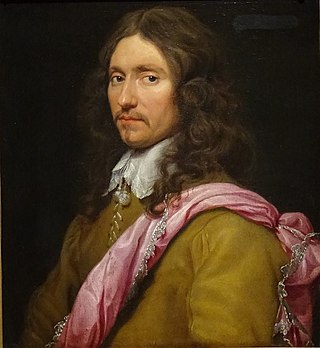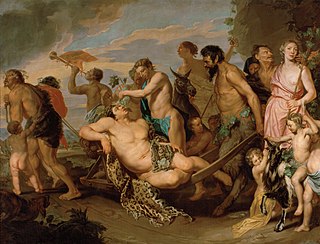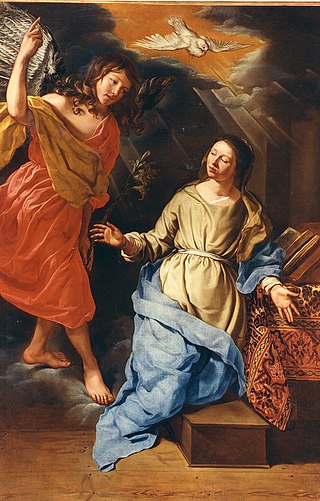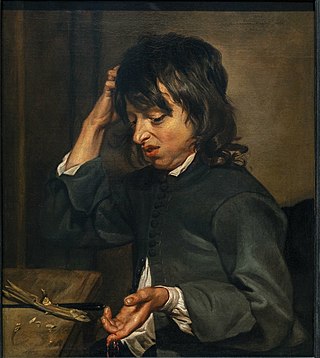Related Research Articles
Michiel Coxie the Elder, Michiel Coxcie the Elder or Michiel van Coxcie, Latinised name Coxius, was a Flemish painter of altarpieces and portraits, a draughtsman and a designer of stained-glass windows, tapestries and prints. He worked for patrons in the principal cities of Flanders. He became the court painter to successively Emperor Charles V and King Philip II of Spain.

Elisabeth of the Palatinate, also known as Elisabeth of Bohemia, Princess Elisabeth of the Palatinate, or Princess-Abbess of Herford Abbey, was the eldest daughter of Frederick V, Elector Palatine, and Elizabeth Stuart. Elisabeth of the Palatinate was a philosopher best known for her correspondence with René Descartes. She was critical of Descartes' dualistic metaphysics and her work anticipated the metaphysical concerns of later philosophers.

Anna Maria van Schurman was a Dutch painter, engraver, poet, and scholar, who is best known for her exceptional learning and her defence of female education. She was a highly educated woman, who excelled in art, music, and literature, and became proficient in fourteen languages, including Latin, Greek, Hebrew, Arabic, Syriac, Aramaic, and Ethiopic, as well as various contemporary European languages. She was the first woman to unofficially study at a Dutch university.

Jan van Kessel the Younger or Jan van Kessel II, known in Spain as Juan Vanchesel el Mozo or el Joven, was a Flemish painter who after training in Antwerp worked in Spain. Known mainly for his portraits he became a court painter to the King and Queen of Spain. A few landscapes and mythological and allegorical scenes have also been attributed to him. He was formerly believed to have been active as a landscape painter, but this is now no longer generally accepted.

The art of the Low Countries consists of painting, sculpture, architecture, printmaking, pottery and other forms of visual art produced in the Low Countries, and since the 19th century in Belgium in the southern Netherlands and the Netherlands in the north.

Catharina Questiers was a Dutch poet and dramatist. Along with Cornelia van der Veer and Katharyne Lescailje, she was the most successful female Dutch poet of the second half of the 17th century. Her brother David also achieved some note as a poet.

Women Painters of the World, from the time of Caterina Vigri, 1413–1463, to Rosa Bonheur and the present day, assembled and edited by Walter Shaw Sparrow, lists an overview of prominent women painters up to 1905, the year of publication.

Michaelina Wautier, also Woutiers (1604–1689), was a painter from the Southern Netherlands. Only since the turn of the 21st century has her work been recognized as that of an outstanding female Baroque artist, her works having been previously attributed to male artists, especially her brother Charles.

The Phoebus Foundation is an art foundation with philanthropic objectives. The foundation acquires works of art, guarantees a professional framework of conservation and management, and looks after the conservation and restoration of the objects. In doing so, it focuses on scientific research. It shares the results of this all with the widest possible audience, through exhibitions, cultural expeditions, symposiums and publications.

Two Boys Blowing Bubbles is a painting by the seventeenth-century Walloon artist Michaelina Wautier. It has been suggested that the painting is a double portrait, given the specific facial expressions and costumes of the two boys depicted are so distinctive. Besides the two boys, the painting depicts a candle and a sandtimer. As with the bubble, both are symbolic of the passing of time, and were familiar motifs in seventeenth-century painting.

Self-Portrait with Easel is a painting by the Flemish artist Michaelina Wautier. It apparently shows a femal artist starting on her painting, having sketched the outline of the head of a portrait. It was painted some time in the 1640s. Despite having been part of various art collections since being completed, it was only identified as being by Wautier in 2013. For a long time, the painting was attributed to the Italian artist Artemisia Gentileschi. Indeed, a 1905 photograph of the painting showed the name Artemisia on the base of the column to the left. It is unknown who added this signature, which is no longer present. A watch with a pink ribbon attached to it sits on the easel, but the precise reason for its inclusion is not known.

The Portrait of a Commander in the Spanish Army is a painting by the Flemish artist Michaelina Wautier. It was painted in 1646. It is one of her earliest known portraits, though the maturity of the execution of the painting implies this is not her first painting. It now hangs in the Royal Museum of Fine Arts in Brussels, having been in the royal collection since 1812.

The Triumph of Bacchus is a painting by the Walloon artist Michaelina Wautier. It was painted between 1650 and 1656 and is considered one of Wautier's greatest works, as well as one of her largest. Based on classical texts, the picture shows a procession with the drunken god Bacchus at its centre, surrounded by other humans, satyrs and animals.

The Annunciation is a painting by the Flemish artist Michaelina Wautier. It is dated 1659, and is one of Wautier's last known paintings.

The Portrait of a Military Commander is a painting by the Flemish artist Michaelina Wautier. The presence of the Wautier coat of arms on the painting has led some art historians to suggest that it depicts the artist's younger brother Pierre Wautier. It was painted some time in the 1650s, and is in a private collection.

The Education of the Virgin is a painting by the Flemish artist Michaelina Wautier. It shows the young Virgin Mary with her mother Anne and her father Joachim. In the pillar on the right is the inscription "Michaelina Wautier, inuenit, et fecit 1656", indicating that she both composed and executed the painting in 1656. The work is now in a private collection.

Saint John the Baptist as a Boy is a painting by the Flemish artist Michaelina Wautier. It depicts Saint John the Baptist as a young shepherd, wearing a sheepskin cover over his right shoulder and with the traditional attributes of a lamp and a simple wooden staff in the shape of a cross. It was painted in the 1650s and is now in the collection of the Museo Lazaro Galdiano in Madrid. The work was previously attributed to the Spanish painter Juan Martín Cabezalero.

The Five Senses is a series of five paintings depicting allegories of sight, smell, taste, hearing, and touch, painted by Flemish artist Michaelina Wautier in 1650. Each sense is personified by a young boy. The paintings have been loaned to the Museum of Fine Arts, Boston, by their owners, Rose-Marie and Eijk van Otterloo.
References
- ↑ Recently re-attributed painting announced on Flemish news website